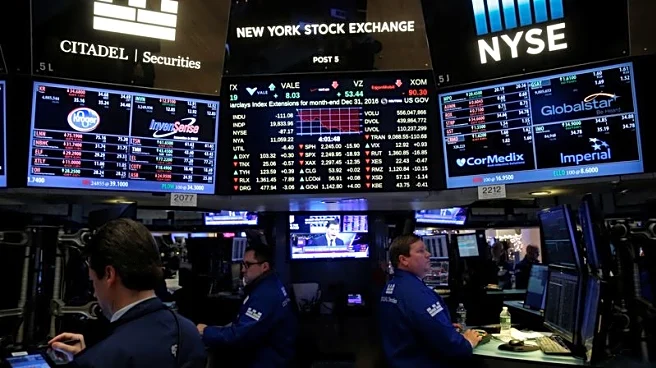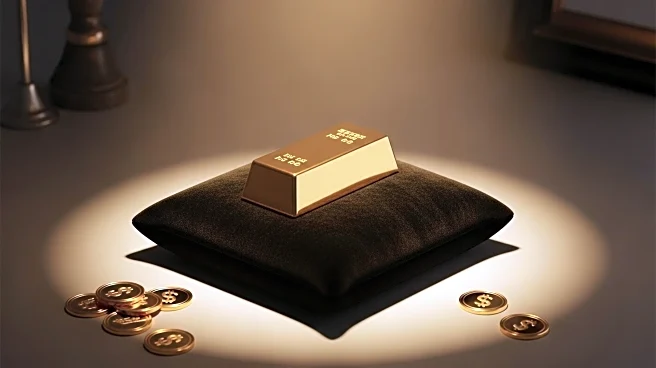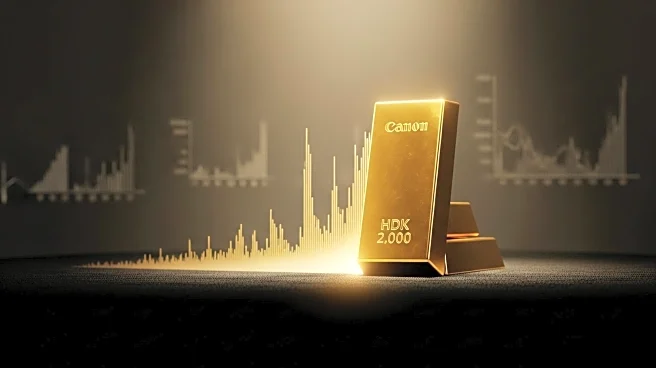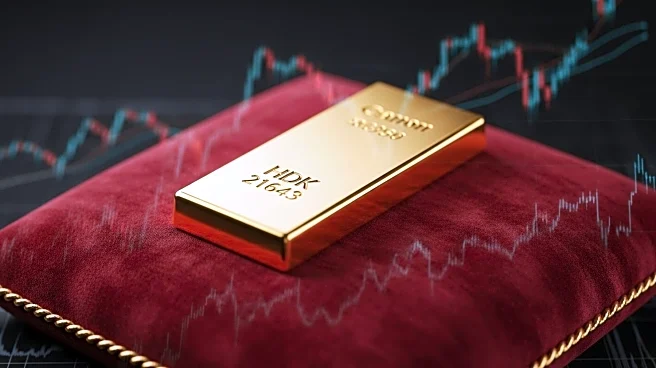What's Happening?
Gold prices have surged to a record high of $3,599.89 per ounce, driven by expectations of a Federal Reserve interest rate cut in September. This increase follows weaker-than-expected U.S. jobs data, which showed a rise in the unemployment rate to 4.3%, the highest since 2021. The labor market's cooling has led traders to price in an 84% chance of a 25 basis-point rate cut and a 16% chance of a 50 basis-point cut at the Fed's upcoming meeting. The precious metal's value has increased by over 36% this year, supported by a weakening dollar, geopolitical tensions, and strong safe-haven demand. Analysts have noted that gold's performance is closely linked to the Fed's monetary policy and the political pressures on its independence, particularly from President Trump.
Why It's Important?
The potential rate cut by the Federal Reserve is significant as it could reshape the economic landscape, affecting various stakeholders. A reduction in interest rates typically weakens the dollar, making gold more attractive as a safe-haven asset. This scenario benefits investors seeking stability amid economic uncertainties. However, the Fed's independence is under scrutiny, with President Trump's criticisms raising concerns about the central bank's autonomy. If the Fed's policies are perceived as influenced by political pressures, it could undermine confidence in dollar-denominated assets, further boosting gold's appeal. The situation highlights the delicate balance the Fed must maintain between economic objectives and political influences.
What's Next?
Market participants are closely monitoring upcoming nonfarm payrolls data for further insights into the Fed's potential rate cut decisions. The trajectory of gold prices will likely remain tied to the Fed's policy actions, the U.S. dollar's performance, and broader geopolitical developments. Analysts suggest that if political pressures on the Fed continue, gold could reach even higher levels, potentially up to $5,000 per ounce. However, significant market disruptions would be necessary for such a dramatic increase. Meanwhile, central banks, particularly in emerging markets, continue to increase their gold reserves, supporting long-term price momentum.
Beyond the Headlines
The ongoing debate over the Federal Reserve's independence raises ethical and governance questions about the influence of political leaders on monetary policy. The situation underscores the importance of maintaining a clear separation between economic policy-making and political agendas to ensure stable financial markets. Additionally, the shift in central bank reserves away from the U.S. dollar towards gold reflects a broader trend of diversifying assets amid global economic uncertainties.












